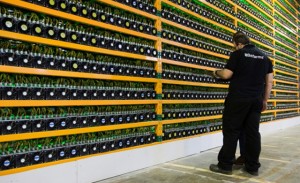A node plays a key role in the BTC network. Also, a node can be said to be a computer that is linked with other computers. These chains of computers abide by similar rules and share information among themselves.

A Full Node
A full Node is a computer that houses a duplicate of the whole Bitcoin blockchain. This computer doesn’t only houses a duplicate of the Bitcoin blockchain, but also synchronizes this copy of the Bitcoin blockchain. Also, full nodes are important in maintaining the functionality of a blockchain.
Nodes functions as a guardian, who inspects and differentiates legitimate Bitcoin transactions from fraudulent ones. The function of nodes in a blockchain is to stop any attempt to re-spend Bitcoins that have been spent already somewhere else.
Full Node Defined
Node’ and ‘full Node’ are usually used interchangeably. Nevertheless, there exists a difference between the two.
Going by Bitcoin’s core cryptography, a full node is a program that approves blocks and transactions. A large portion of full nodes assists the blockchain by collecting transactions and blocks from others like themselves. These recipient nodes will approve the received blocks and transactions. Subsequently, these approved blocks and transactions are then passed on to other full nodes.
Light Node Explained
These nodes only need to perform light downloading and also perform fewer storage activities, compared to the full nodes. A light node only downloads block headers and thus does not house the entirety of the blockchain. Furthermore, their main function is to affirm blockchain transactions. And, they do this using an application called “SPV”.
Contrary to this, a full node approves blocks and BTC transactions. It as well gets transactions and blocks from full nodes.
General Agreement in the Blockchain
This can be defined as the laws on which the blockchain functions, affirms the approval of blocks and the housed information. Maintenance of general agreement amongst nodes, transaction confirmation, and balloting suggestions is the main duty of a full node.
Examples of Full Nodes
The first is the pruned full node. This node’s download start from the initial point of the chain till it gets to a point when the oldest blocks will be removed from the blockchain. This node is called the pruning node because the decision of the subtree is cut-off, consequently, a prune node uses lesser space on a computer hard drive.
Another type of a full node is the Archival full node, this node houses the whole blockchain, therefore uses more space on a computer hard drive.
Sub-divisions of Archival Nodes. This node can be further divided into mining nodes, staking nodes, and authority nodes.
Nodes Used for Mining
These are mostly called miners. The miners’ nodes provide solutions to intricate cryptographic puzzles, this activity is called mining. Each miner node strives to be the first to solve the cryptographic puzzle, thereby creating a new block in the blockchain, and also shows the evidence of being the first node to create the block. Immediately the whole network affirms a transaction, a new block is supplied to the blockchain, and the miner gets rewarded.
The creator of Bitcoin: Satoshi, refers to miners as nodes. However, as time passed by this has somehow come to mean more than just nodes. Miners make use of specialized hardware to supply additional blocks to the Bitcoin blockchain. Subsequently, they are rewarded for their work.
Master Nodes
This is another variant of full nodes. And, apart from housing the whole blockchain as well as approving transactions, it stabilizes and protects the whole ecosystem. This node can as well performs functions such as private transaction and instant transactions, providing funds and management of Treasury, and as well governance balloting.
Staking Nodes
To take part in creation, validation and approval of blocks, stakers are asked to possess some quantity of crypto. Apart from investing cryptos, staking programs also factor in time in the blockchain, the overall staking individuals in the blockchain, and some unknown factors in choosing the individual that gets to approves a block.
The agreed on guidline backing the approval of transactions of staking nodes is referred to as proof of Stake.
Authority Nodes
A variation of general agreement model is referred to as Proof of Authority. This more known in private blockchains. Authorities are assigned the responsibility of designing and approving new blocks in the blockchain. The most authorities is needed for approval
Teach yourself technical analysis: Technical Analysis

 Hot Features
Hot Features















